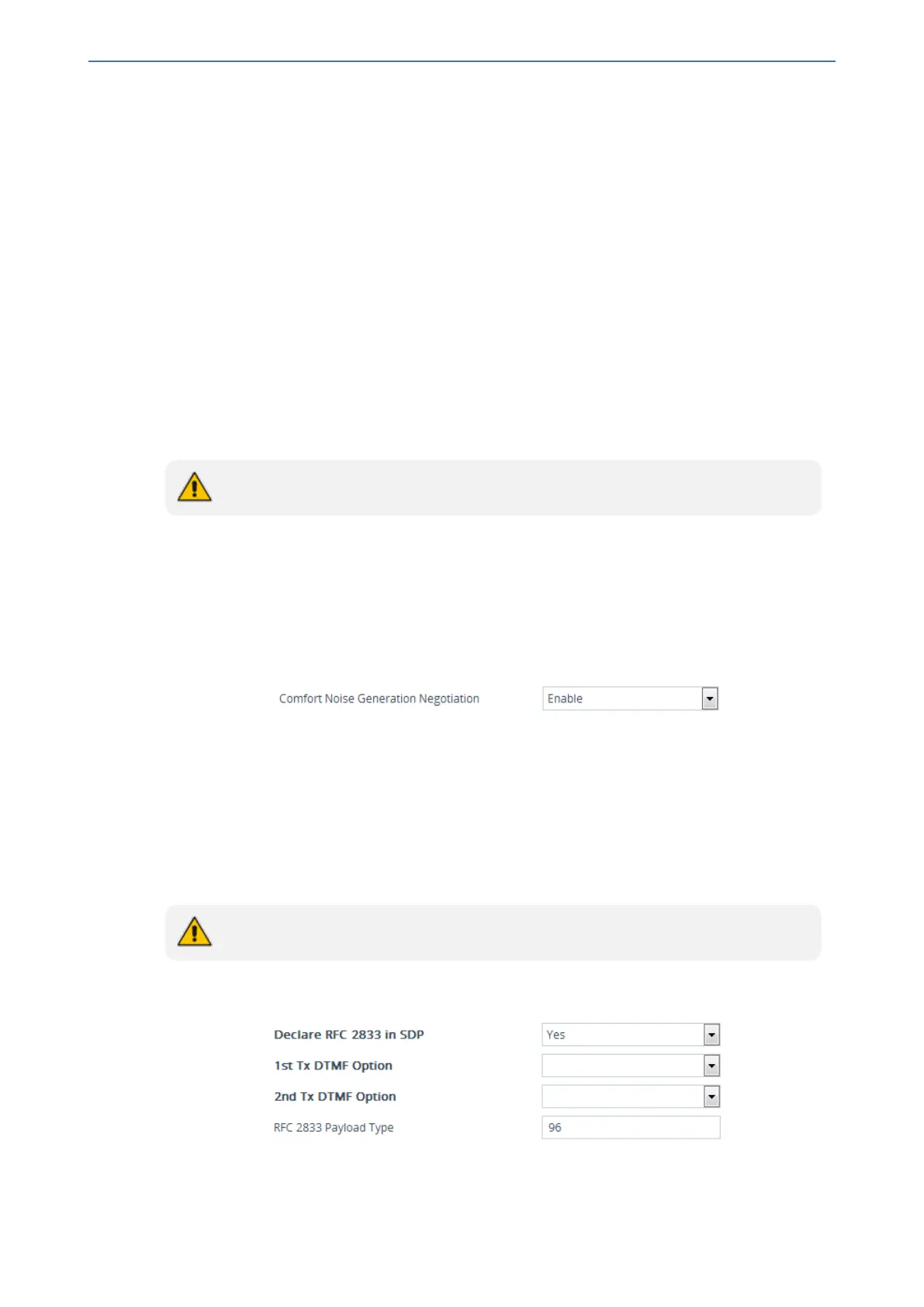CHAPTER15 Media
Mediant 1000 Gateway & E-SBC | User's Manual
2. Set the 'Dynamic Jitter Buffer Minimum Delay' parameter (DJBufMinDelay) to the minimum
delay (in msec) for the Dynamic Jitter Buffer.
3. Set the 'Dynamic Jitter Buffer Optimization Factor' parameter (DJBufOptFactor) to the
Dynamic Jitter Buffer frame error/delay optimization factor.
4. Click Apply.
Comfort Noise Generation
The device can generate artificial background noise, called comfort noise, in the voice channel
during periods of silence (i.e. when no call party is speaking) for Gateway calls. This is useful in
that it reassures the call parties that the call is still connected. The device detects silence using its
Voice Activity Detection (VAD) mechanism. When the Comfort Noise Generation is enabled and
silence is detected, the device transmits Silence Identifier Descriptors (SIDs) parameters to
reproduce the local background noise at the remote (receiving) side. The Comfort Noise Generation
support also depends on the silence suppression (SCE) setting for the coder used in the voice
channel. For more information, see the description of the Comfort Noise Generation related
parameters.
This feature is applicable only to the Gateway application.
The following procedure describes how to configure Comfort Noise Generation through the Web
interface.
➢ To configure Comfort Noise Generation:
1. Open the RTP/RTCP Settings page (Setup menu > Signaling & Media menu > Media folder
> RTP/RTCP Settings). The relevant parameters are listed under the General group, as
shown below:
2. Set the 'Comfort Noise Generation Negotiation' parameter (ComfortNoiseNegotiation) to
Enable.
3. Click Apply.
Configuring DTMF Transport Types
The device supports various methods for transporting DTMF digits over the IP network to the
remote endpoint for Gateway calls.
This feature is applicable only to the Gateway application.
The methods and their configuration can be configured on the DTMF & Dialing page (Setup menu >
Signaling & Media tab > Gateway folder > DTMF & Supplementary > DTMF & Dialing):
■ Using INFO message according to Nortel IETF draft: DTMF digits are sent to the remote
side in INFO messages. To enable the mode:
- 169 -

